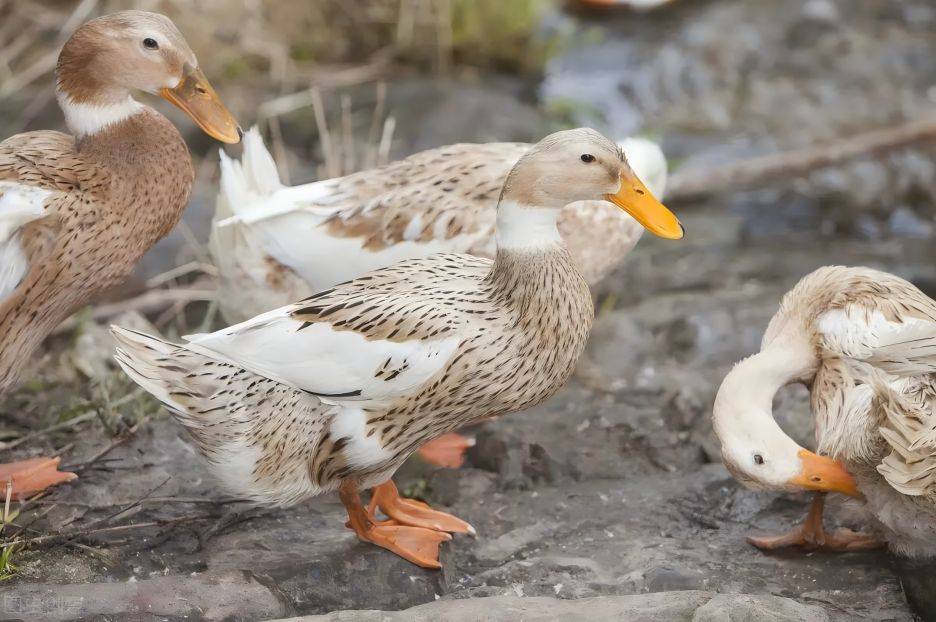What Are the Benefits of MOS Oligosaccharides for Animal Breeding?
Manno-oligosaccharides (MOS) are widely found in konjac flour, guar gum, gelatin and yeast cell wall, very soluble in water, insoluble in organic solvents, and are oligosaccharides composed of α-1,2, α-1,3 and α-1,6 glycosidic bonds. Compared with antibiotics and microecological agents, mannan oligosaccharides have the advantages of high efficiency, safety and environmental protection, which can reduce the number of Escherichia coli and Salmonella, increase the number of Lactobacillus and Bifidobacterium, effectively improve the microflora of the intestinal flora, increase the daily weight gain of the animal and the feed conversion rate, and enhance the body's resistance to disease. As a new, efficient and environmentally friendly feed additive, it has a promising application in animal nutrition.
1 Physiological functions of manno-oligosaccharides
1.1 Regulation of the gastrointestinal environment
Mannan oligosaccharide can promote the proliferation of beneficial microorganisms and inhibit the reproduction of harmful microorganisms, and can adsorb pathogenic bacteria. Some studies show that mannan oligosaccharide can adhere to the outer edge agglutinin of 11 kinds of E. coli, which can block the combination of the outer edge agglutinin of intestinal pathogens and the specific sugar molecules on the surface of mucosal epithelial cells, so that the intestinal pathogens can't be planted in the gastrointestinal tract and propagate, so that the intestinal beneficial bacterial flora can be grown and propagated, and the intestinal micro-ecology can be improved, which is more conducive to the digestion and absorption of the organism.
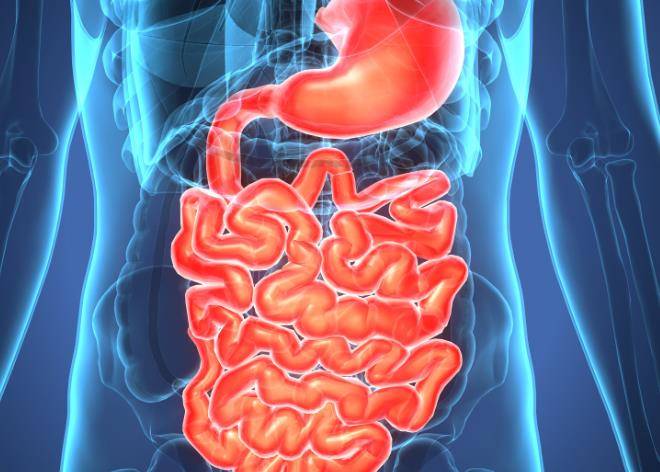
1.2 Improvement of immunity
When a certain MOS exists in the intestinal tract, oligosaccharides will competitively combine with exogenous lectins on the surface of pathogenic bacteria, thus slowing down the absorption of antigens and increasing the potency of antigens, thus enhancing the cellular and humoral immune responses of animals. Shao Liangping showed that oral administration of mannan oligosaccharides could significantly increase the serum IgG content of lactating piglets (P<0.05) and the serum IgA content (P<0.01), and mannan oligosaccharides could also significantly increase the phytoalexin lymphocyte conversion rate, leukocyte phagocytosis and the total number of T-lymphocytes in lactating piglets (P<0.01), while glutathione peroxidase in the piglets' blood was also increased (P<0.05), and the total number of T-lymphocytes in the piglets' blood was also increased (P<0.01). The contents of glutathione peroxidase (GSH-Px) and superoxide dismutase (SOD) in the blood of piglets were also significantly increased (P< 0.01). Zhou Hongli et al. also pointed out that the addition of mannan oligosaccharide to the diets of weaned piglets significantly increased the serum IgG content, and the contents of IgA and IgM were higher than those of the control group, which led to the conclusion that mannan oligosaccharide has a certain effect on the humoral immune system.121 The results of this study show that mannan oligosaccharide has a significant effect on the immune system of piglets.
1.3 Adsorption or binding of mycotoxins
Manno-oligosaccharides powder can eliminate the harmful effects of mycotoxins by physisorption or direct binding to mycotoxins. It has been found that mannan oligosaccharides bind zearalenone, aflatoxin, and hesperidin, and Zaghini et al. demonstrated that the addition of yeast cultures degraded or bound up to 88% of aflatoxin B in an in vitro liquid culture medium. Raju et al. found that the binding of mannan oligosaccharide to aflatoxin, zearalenone and ochratoxin was 82.5%, 51.6% and 26.4% respectively in an in vitro test simulating the digestive tract of broiler chickens41 .
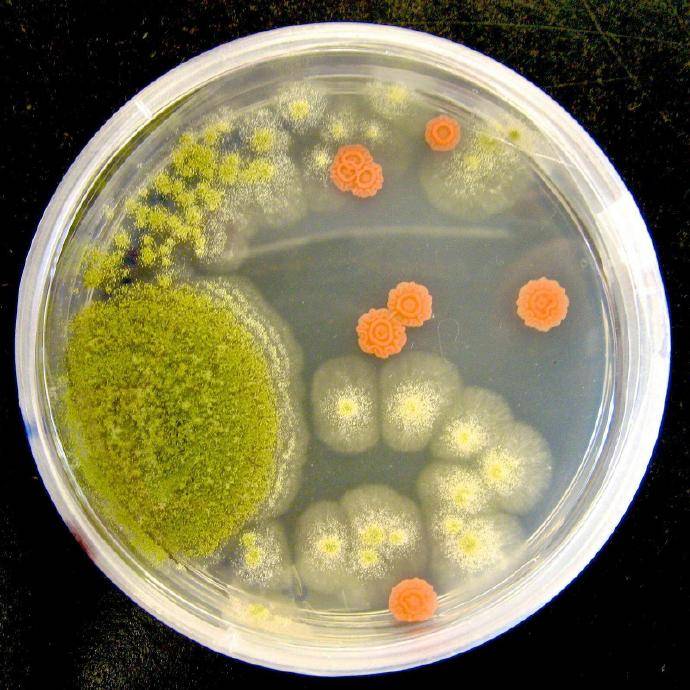
2 Application of manno-oligosaccharides in Animal Breeding
2.1 Pigs
Yue Wenbin et al. added mannan oligosaccharide 0.5% to the basal diet of weaned piglets at 35 days of age, and the test results showed that the concentration of Escherichia coli in the cecum and colon of the test group was significantly lower (P<0.05) and the concentration of Lactobacillus and Bifidobacterium lactis and Bifidobacterium bifidum in the cecum was significantly higher (P<0.05) compared with that of the control group ⁵¹ . Zhang Caiyun et al. added galactomannan oligosaccharides 0.12% (treatment 1), aureomycin 50 mg-kg¹ + galactomannan oligosaccharides 0.08% (treatment 2), aureomycin 100 mg-kg-¹ (treatment 3) to the basal diets of weaned piglets at 28 days of age, and compared the results, they found that the average daily weight gain and average daily feed intake were highest in treatment 1, which was 17.55%, 7.13%¹6 and 7.13%¹6 higher than that of treatments 2 and 3, respectively. and 7.13%¹6]. Wu Chunzao et al. added 100 mg-kg-¹ of hygromycin and 0.2% of mannan oligosaccharide to the weaning basal diet at 30 days of age, and the results showed that the addition of mannan oligosaccharide increased the daily weight gain of piglets and reduced the feed-to-meat ratio, and the difference with the control group was significant (P<0.05); the levels of total protein, urea nitrogen, and total cholesterol in the serum were significantly reduced (P<0.05), and the activity of SOD in the serum was significantly increased (P<0.05), and the activity of SOD in the serum was significantly increased (P<0.05). activity was significantly increased (P< 0.05)⁷.
Shao Liangping and Zhou Hongli also reported that MOS significantly increased the serum IgG level of weaned piglets¹-2). Huang Junwen et al. reported that the addition of mannan oligosaccharide to the diet of weaned piglets resulted in the length of small intestinal villi being higher than that of the blank group, while the depth of crypts was lower than that of the blank group8).
Chen Lixiang et al. showed that the addition of MOS 0.15% significantly increased interleukin-6, cortisol, and growth hormone in milk, and increased the lactation volume and milk protein content of sows compared with the control group (P< 0.05)¹91. Wang Bin et al. reported that the addition of MOS to sows with the same dietary nutritional level significantly increased the lactation volume of sows compared with the control group and lowered the feed-to-milk ratio (P& lt;0.05), and had a modifying effect on endocrine function10 . It was reported by Wang Bin et al. that when the nutritional level of sows' diets was the same, the addition of MOS group could significantly increase lactation volume and reduce the feed-to-lactation ratio compared with the control group (P&&;0.05), and it also had a certain regulating effect on the endocrine function10 .
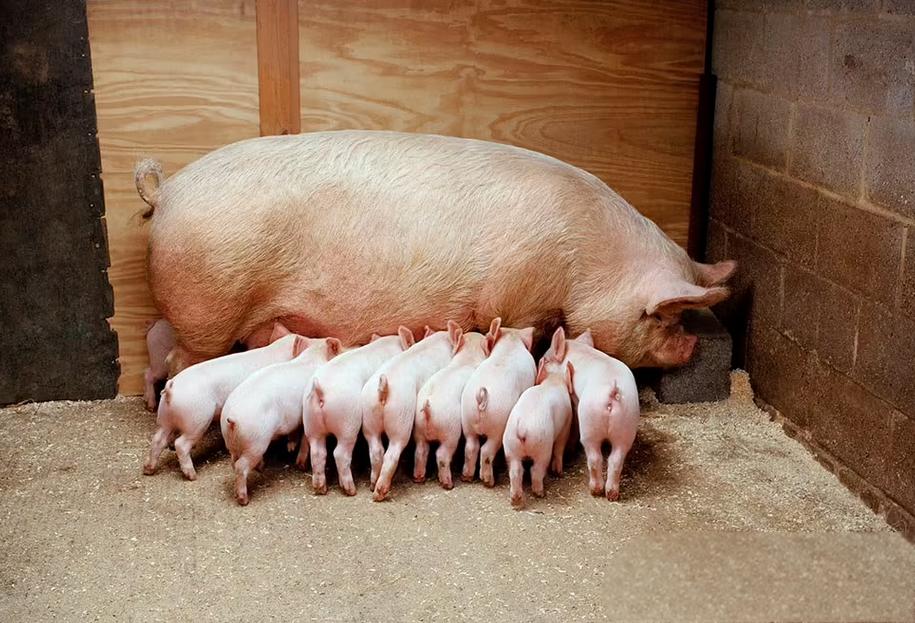
2.2 Poultry
2.2.1 Chickens
Yu Guiyang et al. reported that appropriate amount of mannan oligosaccharide can promote the proliferation of bifidobacteria in cecum and ileum, and also promote the proliferation of lactobacilli in ileum and cecum, and inhibit the growth of Escherichia coli. Manno-oligosaccharides can partially or completely replace antibiotics in broiler diets, and the effect of manno-oligosaccharides is better when the amount of manno-oligosaccharides is added at 0.5~1 g-kg-". Zhang Jianbin et al. studied the effect of replacing antibiotics with mannan oligosaccharides on the intestinal flora of laying chicks, and the results of the study showed that the numbers of Bifidobacteria and Lactobacillus in the cecum and ileum of laying chicks were significantly increased in the mannan oligosaccharides group compared with the control group and the antibiotic group (P<0.05), and the number of Escherichia coli in the intestinal tract of laying chicks was significantly decreased in the mannan oligosaccharides group compared with the control group (P<0.05).12]. Zhang Haitang et al. set up three experimental groups, namely, group I (basal diet + MOS 0.5 g-kg¹), group II (basal diet + MOS 1.0 g-kg¹), and group III (basal diet + MOS 2.0 g-kg¹), and compared with the control group, the average daily weight gain of the experimental groups increased by 2.11%, 3.15%, and 1.24%, respectively; and the feed-to-weight ratios were reduced by 2.14%, 2.56%, and 0.85%, respectively, 2.56% and 0.85%, respectively; the thymus index, spleen index and bursa index of the test group II were increased by 26.02%, 30.82% and 16.87%, respectively, and the addition of MOS 1.0 mg-kg was appropriate to improve the performance and immunity of broiler chickens¹3 .
Chen Yongjun et al. added MOS to the basal diets of broiler and laying hens, and the results showed that the T cells in the peripheral blood of broilers in the experimental group were higher than those in the control group, with a highly significant difference (P<0.01), and the antibodies against Newcastle disease in laying hens were significantly higher than those in the control group (P<0.05), and the weight gain of broilers in the experimental group in different places were higher than that of the control group by 312.5 g and 94.5 g, with a significant difference (P<0.05), and the survival rate increased by 0.7% and 2.3% respectively¹4 . The differences were significant (P<0.05), and the survival rate increased by 0.7%, 2.3%¹4. Sims et al. pointed out that MOS had the effect of improving the performance of turkeys, and MOS increased the level of IgA in the mucous membrane of turkeys, and significantly increased the level of IgG in the blood. MOS can promote the proliferation of T cells in peripheral blood and increase the percentage of T cells. Wang Quan et al. added MOS 25 g-kg¹ to broiler diets and showed that MOS had a significant stimulatory effect on the suprachoroidal bursa, thymus, and cecum tonsils, with the weight of the suprachoroidal bursa and thymus increasing by 37.6% and 11.5%, respectively, compared with the control group.16 Zhou Yinghua et al. showed that the addition of MOS 1 g-kg¹ to the basal diets of broilers significantly increased the percentage of T lymphocytes (p<0.01) in the blood. Zhou Yinghua et al. showed that the addition of MOS 1g-kg¹ to the basal diet of broiler chickens significantly increased the percentage of T lymphocytes in blood (P<0.05), and also increased the percentage of T lymphocytes in blood (P<0.05).
IgA, IgG, and IgM content 7.
2.2.2 Ducks
Zang Su-min et al. reported that adding 0.05%, 0.1%, 0.2% and 0.4% of mannan oligosaccharides to the diet of Cherry Valley ducks, respectively, showed that adding 0.1% of mannan oligosaccharides increased the final body weight of broiler ducks by 5.96%; the average daily weight gain increased by 6.65%; the utilization rates of dry matter, crude ash, and crude protein were increased by 9.21%, 22.09%, and 10.64%, respectively; the number of Lactobacillus spp. The number of Lactobacillus spp. increased significantly (P<0.05), and the number of E. coli and pH decreased significantly (P<0.05).08 Gao Shudong et al. showed that the addition of mannan oligosaccharides to diets significantly increased the daily weight gain of broiler ducks.9 In addition, the daily weight gain of broiler ducks increased by 6.65%, dry matter, crude ash and crude protein utilization increased by 9.21%, 22.09% and 10.64% respectively.
2.2.3 Quail
Zhang Aiwu et al. added MOS 0.5%, 1.0%, and 2.0% to the basal diet (test groups I, II, and III), and the heart, liver, and pancreas fresh weights of the 50-day-old meat quail in test group I increased by 10.00%, 17.00%, and 5.00%, respectively, compared with the control group; bursa fresh weights and heart fresh weights of the II group increased by 13.04% and 11.00%, respectively, compared with the control group; and heart fresh weights of the 35 and 50-day-old meat quail in the III group increased by 7.14% and 8.00%, respectively, compared with the control group20 . Fresh weight of bursa and heart in group II was 13.04% and 11.00% higher than that of the control group, while in group III, fresh weight of heart was 7.14% and 8.00% higher than that of the control group at 35 and 50 days of age, respectively20 .
2.3 Ruminants
2.3.1 Cattle
Bao Yan'an et al. showed that the addition of 20 g-d-¹- head¹ of mannan oligosaccharides to the basal diet of dairy cows resulted in significant (P<0.05) differences in milk yield, milk fat percentage and somatic cell count of the experimental group of cows compared with the control group, and the addition of a certain amount of mannan oligosaccharides to the diet had a positive effect on the milk yield and the conventional composition of the milk of Holstein dairy cows. Tan Xueying et al. showed that the average milk fat percentage of Holstein cows increased by 0.48% with the addition of mannan oligosaccharides to the diet compared to the control group, with a significant difference (P<0.05)²2 . Wang Dingfa et al. tested blood IgG and IgA of calves before and after the test and found that MOS significantly increased blood IgA and IgG levels, in addition to significantly increasing weight gain and economic efficiency.23 Franklin et al. showed that feeding MOS increased specific immune responses to rotavirus in dry period cows.24 Selars et al. reported that mannan oligosaccharides significantly increased daily weight gain and reduced morbidity of calves.25 In addition, the average milk fat percentage of cows was 0.48% higher than that of the control group. Selars et al. reported that mannan oligosaccharides significantly increased the daily weight gain of calves and reduced the morbidity rate (P<0.05)²5 . Zhao Xiaojing et al. studied the effect of 0.1% and 0.2% mannan oligosaccharide on the intestinal flora of calves, and the results showed that, from 7 to 21 days of age, the number of E. coli in the control group, the 0.1% group and the 0.2% group decreased by 38.34%, 68.37%, and 55.33% respectively compared with that at the beginning of the experiment; the number of lactic acid bacilli increased by 12.20%, 41.25%, and 17.49%; the number of E. coli in the control group, the 0.1% group, the 0.2% group increased by 12.20%, 41.25%, and 17.49% respectively, and the number of Lactobacillus spp. increased by 17.49%. At the age of 21~35 days, the E. coli counts of each group decreased by 16.82%, 24.14% and 32.39% respectively compared with that at the beginning of the experiment, while the Lactobacillus increased by 2.33%, 17.49% and 7.15%, respectively. It can be seen that the intestinal bacterial flora of calves was optimized by feeding mannan-oligosaccharides, the ratio of the E. coli counts of Lactobacillus and E. coli counts was increased, and it was increased by most in the group of 0.1% mannan-oligosaccharides.25 The results were as follows.
2.3.2 Sheep
Ling Baoming et al. pointed out that the addition of MOS to diets could improve rumen fermentation in growing sheep to a certain extent, but the mechanism of MOS in improving rumen fermentation and the appropriate amount of MOS to be added to diets need to be further investigated.7 The results of this study show that MOS can improve rumen fermentation in growing sheep to a certain extent.
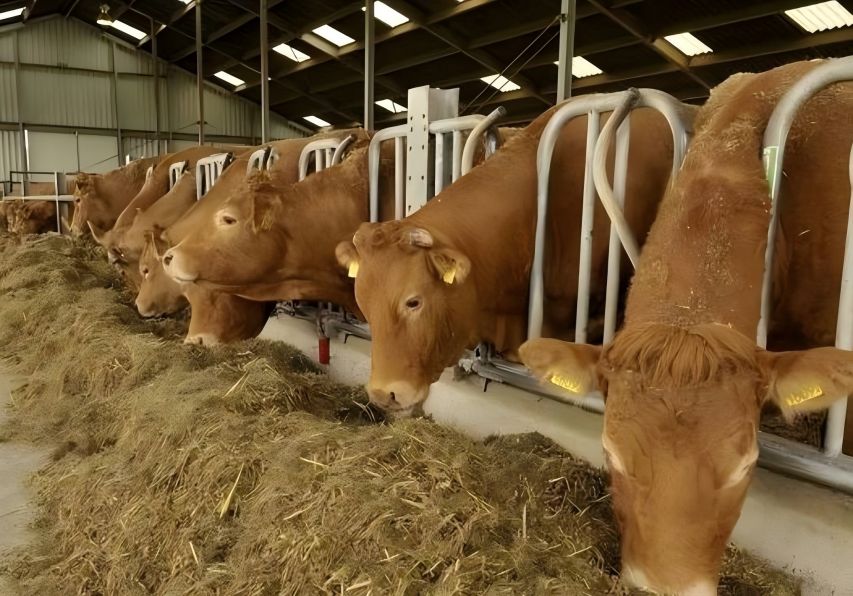
2.4 Aquatic animals
Ma Zhihong et al. conducted a comparative feeding trial with mannan-oligosaccharides as feed additives for carp. The results of the study showed that the feed coefficient, relative weight gain rate, leukocyte phagocytosis rate, phagocytic index, splenic index, and serum hemolysin activity of the carp were increased by 1.52%, 34.03%, 32.47%±3.72%, 1.76±0.17, 0.36±0.02, and ( 51.53±3.31) U, and the serum bactericidal percentage was 27.85%±6.00%, 22.46%±4.88% in the test group and the control group, respectively. 51.53±3.31)U, and the serum bactericidal percentage of carp in the test group and control group were 27.85%±6.00%, 22.46%±4.88%, respectively, and mannan-oligosaccharides could improve the growth performance and non-allergic immune function of carp.128 Liu Aijun et al. reported that the addition of MOS 5 g-kg¹ to the feed of tilapia increased the rate of weight gain by 19.2%, lowered the feed coefficient by 13.4%, and reduced the dry matter factor by 13.4%. Liu Aijun et al. reported that the addition of MOS 5 g-kg¹ to tilapia feed increased the weight gain rate by 19.2%, decreased the feed coefficient by 13.4%, and increased the dry matter digestibility and protein digestibility by 12.9% and 3.4%, respectively, and that the addition of mannan oligosaccharides significantly increased the villi height, villi width, and villi density.129 Li Yunlan reported that the MOS promoted the growth of bifidobacteria and lactic acid bacillus, beneficial bacteria of the aquatic intestine. Addition of MOS 270 mg-kg¹ to the foregut, midgut and hindgut of young carp increased the mass concentrations of Lactobacillus and Bifidobacterium by 3.23%, 2.93% and 2.27%, respectively, compared with the control group30 .
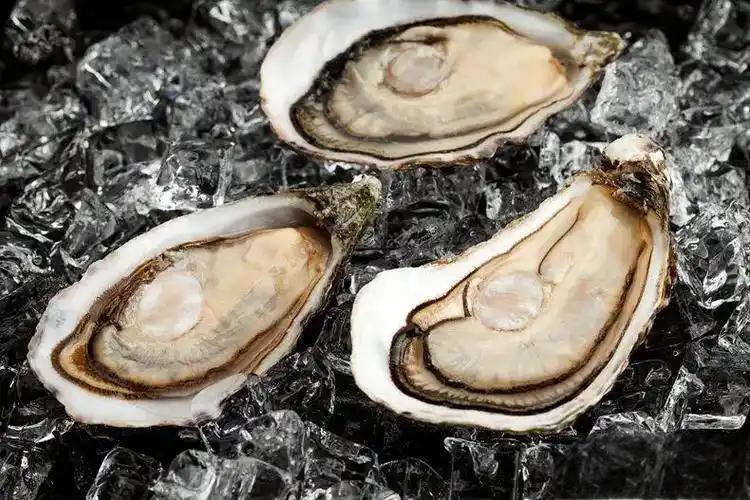
2.5 Other animals
Gao Qiyu et al. found that the addition of MOS significantly enhanced nutrient absorption in the rat colon and intestinal tract, and improved colon function.3 It was shown that the combination of MOS and organic zinc significantly reduced crypt depth, increased the ratio of villus length to crypt depth, and enhanced the absorption of nutrients.4 In addition, MOS and organic zinc were also shown to increase the activity of liver tissue enzymes (SOD, CAT, GSH-Px, etc.) in mice. Wang Fang et al. showed that MOS 1~2g -kg¹ could increase the activity of liver tissue enzymes (SOD, CAT, GSH-Px, etc.), increase the level of glutathione (GSH), increase the total antioxidant capacity of liver tissue and the scavenging rate of hydroxyl radicals (-OH), and decrease the content of malondialdehyde (MDA) and the level of reactive oxygen species (ROS) in mice; MOS was effective in scavenging -OH in vitro; and MOS was effective in scavenging -OH in mice. MOS can effectively remove -OH in vitro; in mice, the addition of appropriate amount of MOS can improve the antioxidant capacity of liver tissues and protect the liver from various oxidative stresses and damages2 .
3 Summary
As a new type of safe, efficient and environmentally friendly feed additive, mannan oligosaccharide overcomes the problems of disturbing the intestinal microbial homeostasis, drug resistance and drug residues caused by the long-term use of antibiotics; a large number of experimental studies have shown that mannan oligosaccharides are able to effectively improve the performance of animal production, lead the beneficial intestinal bacteria to take the dominant position, and enhance the immunity of animals, but the mechanism of the action of MOS, and the effect of different dosages of additives need further research. The mechanism of MOS action and the effect of different additives need to be further studied.
References:
[1] SHAO Liang-Ping, ZHOU Lun-Jiang, FEI Zheng-Fang, et al. Effects of mannan oligosaccharide on immune function and blood antioxidant enzymes in piglets[J]. Journal of Nutrition, 2000,22(1):82-84.
[2] ZHOU Hongli, ZHANG Shirui, HE Jianhua. Effects of mannan-oligosaccharides on the intestinal flora and antimicrobial levels of weaned piglets and their growth performance[J]. Journal of Hunan Agricultural University, 2002,28(2):135-138.
[3]Zaghini A,Martelli G,Roncada P,et al.Mannan oligosaccharides and aflatoxin B1 in feed for laying hens:effects on egg quality,af- latoxins BI and M1 residues in eggs, and aflatoxin Bl levels in liv- er[J].Poultryscience,2005,84(6):825-832.
[4]Raju MVL N,Devegowda G.Influence of esterified-glucoman- nan on performance and organ morphology,serum biochemistry andhaematology in broilers exposed to individual and combined mycotoxicosis (aflatoxin, ochratoxin and T-2 toxin)[J].British Poultry Science,2000,41(5):640-650.
[5] YUE Wen-Bin, CHE Xiang-Rong, ZANG Jian-Jun, et al. Effects of mannan oligosaccharide on the main intestinal flora of weaned piglets[J]. Journal of Laser Biology, 2002,11(4):247-250
[6] ZHANG Caiyun, MA Yanhe. Effect of mannan oligosaccharide on growth performance of early weaned piglets [J]. Feed Research, 2003(3):1-3.
[7] WU Chun-zao, WANG Jian-hua. Effects of lactic acid bacteria and mannan oligosaccharide on growth and serum biochemical indexes of weaned piglets[J]. Jiangsu Agricultural Journal, 2011,27(1):94-99.
[8] HUANG Jun-Wen, LIN Ying-Cai, FENG Ding-Yuan. Effects of mannan-oligosaccharides on intestinal microecology[J]. Veterinary medicine and feed additives, 2005,10(3):11-13.
[9] CHEN Lixiang, CHEN Jianrong, TAN Liangxi, et al. Effects of nutritional level and mannan-oligosaccharides on lactation volume, milk routine composition and hormone levels in milk of sows[J]. Journal of Hunan Agricultural University, 2007,33(1):57-60.
[10] WANG Bin, HUANG Ruilin, HE Zishuang, et al. Application effect of galactomannan oligosaccharide on lactating sows instead of antibiotics[J]. Anhui Agricultural Science, 2006,34(3):483-484,605.
[11] YU Guiyang, ZHANG Wu, ZHENG Chunfang. Effects of mannan-oligosaccharides on intestinal microorganisms in broilers[J]. Veterinary medicine and feed additives,2004,9(5):7-9.
[12] ZHANG Jian-Bin, CHE Xiang-Rong, YANG Hua. Effects of mannan-oligosaccharides on intestinal flora of laying chicks in place of antibiotics[J]. Feed Expo, 2010(5):29-30.
[13] ZHANG Haitang, WANG Yanrong, CUI Yanhong. Effects of mannan-oligosaccharide replacing flavomycin on production performance and immune function of broiler chickens[J]. Guizhou Agricultural Science, 2008,36(2)114-116.
[14] CHEN Yongjun, WANG Quan, QIAN Yingjuan, et al. Effects of mannan oligosaccharide (MOS) on immunity and performance of broiler and laying hens[J]. Shanghai Animal Husbandry and Veterinary Medicine Newsletter, 2004(5):24-25.
[15]Sims M D,Dawson K A,Newman K E,et al.Effects of dietary mannan oligosaccharide,bacitracin methylene disalicylate,or both on the live performance and intestinal microbiology of turkeys[J].Poultry science,2004,83(7):1148-1154.
[16] WANG Quan, CHEN Yongjun, QIAN Yingjuan. Effect of mannan oligosaccharide on the immunity function of peripheral blood lymphocytes in chickens[J]. Chinese Veterinary Science and Technology, 2002,32(1):28-29.
[17] ZHOU Yinghua, ZHANG Shirui. Effects of mannan-oligosaccharides on production performance, intestinal microorganisms and immune function of broiler chickens[J]. Journal of Hunan Agricultural University, 2003,29(3):15-17.
[18] ZANG Su-Min, SONG Yong, LI Tong-Zhou, et al. Effects of mannan-oligosaccharides on production performance, nutrient utilization and cecal flora of Cherry Valley ducks[J]. Livestock and Veterinary Medicine, 2005,37(10):14-16.
[19] Gao Shudong, Ma Jian, Ji Mingshan, et al. Investigation and study on the effects of wheat-type diets supplemented with wamylose enzyme and maltogenic enzyme on the performance of broiler ducks[J]. Feed Wide Angle, 2003(4): 33-35.
[20] Zhang Aiwu, Xue Jun. Effects of mannan-oligosaccharides on internal organs of meat quail[J]. Anhui Agricultural Science, 2011,39(13):7814-7816.
[21] Bao Yan'an, Xing Shufang, Xu Qinglong. Effects of mannan oligosaccharides on milk yield and milk routine of Holstein dairy cows[J]. Feed Research, 2009(2):27-29.
[22] Dart Xueying, Qin Xijie. Research on the effect of mannan oligosaccharide and cellulose complex enzyme on milk fat rate of dairy cows[J]. Modern Animal Husbandry and Veterinary Medicine, 2009(6):24-25.
[23] WANG Dingfa, HUANG Daiyong, YAN Bangfu. Effect of mannan oligosaccharide on weight gain and blood immunoglobulin in calves[J]. Shanghai Animal Husbandry and Veterinary Medicine Newsletter, 2005(6):18.
[24]Franklin ST,Newman M C,Newman KE,et al.Immune parame- tersofdry cows fed mannan oligosaccharide and subsequent trans- fer of immunity to calves[J Journal of Dairy Science,2005,88(2):766-775.
[25]Selars K,Burrill M,Trei J,et al.Effect of mannan-oligosaccha- ride supplementation on performance and health of Holstein calves[J].J Dairy Sci,. 1997,80(1):188.
[26] ZHAO Xiaojing, LI Jianguo, LI Qufeng, et al. Study on the effect of mannan oligosaccharide on fecal flora of calves[J]. Chinese Journal of Animal Husbandry, 2007,43(5):31-33.
[27] LING Baoming, QU Mingren, LU Dexun. Effect of mannan oligosaccharide on rumen fermentation function of growing sheep (in vitro)[J]. Feed Expo, 2006(9):6-7.
[28] Ma C-H, Jin J, Liu H-M. et al. Effects of mannan oligosaccharide on the growth and immune function of carp[J]. Anhui Agricultural Science, 2010,38(3):1291-1292,1296.
[29] LIU Aijun, LENG Xiangjun, LI Xiaoqin, et al. Effects of flavomycin and mannan oligosaccharide on growth performance and serum non-specific immunity of Oniola tilapia[J]. China Feed, 2009(3):29-30.
[30] Li Yunlan. Effects of mannan oligosaccharide on the intestinal flora and immune function of young Jian carp[D]. Ya'an: Sichuan Agricultural University, 2004.
[31] Gao Qi-Yu, Li Yan-Lan, Xu Guang-Cui, et al. Effects of mannan oligosaccharide on the structure of SPF rat colon[J]. Journal of Xinxiang Medical College, 2006,23(5):437-439.
[32] WANG Fang, LOK Guowei, SHI Yunhui, et al. Effects of mannan oligosaccharide on the removal of free radicals and the activity of antioxidant enzymes in mouse liver[J]. Journal of Nutrition, 2007,29(5):466-469.
-
Prev
How Are Mannan Oligosaccharides(MOS) Used in Animal Feeding?
-
Next
What Are the Uses of Mannan Oligo Saccharide in Animal Feeding?


 English
English French
French Spanish
Spanish Russian
Russian Korean
Korean Japanese
Japanese